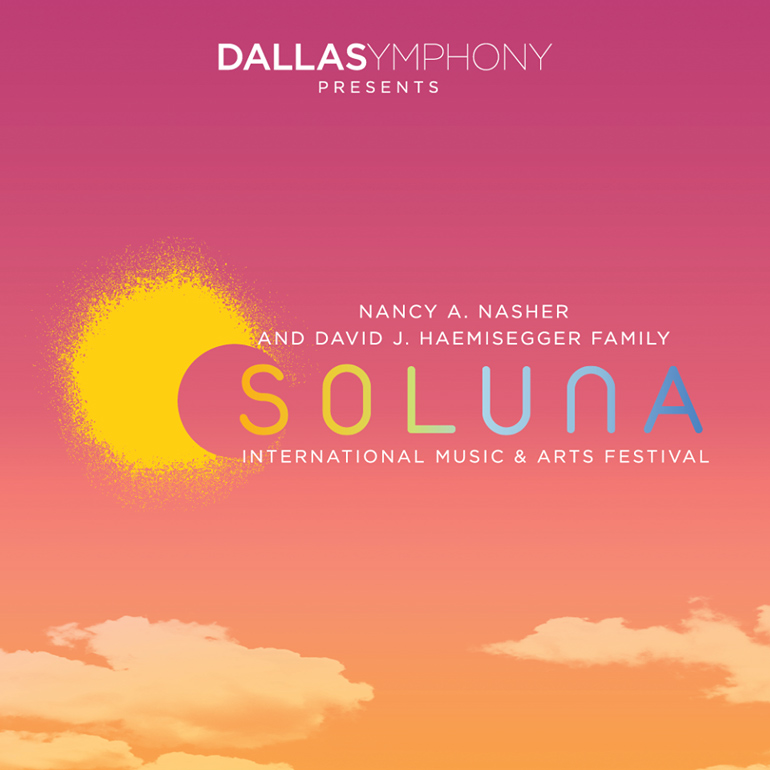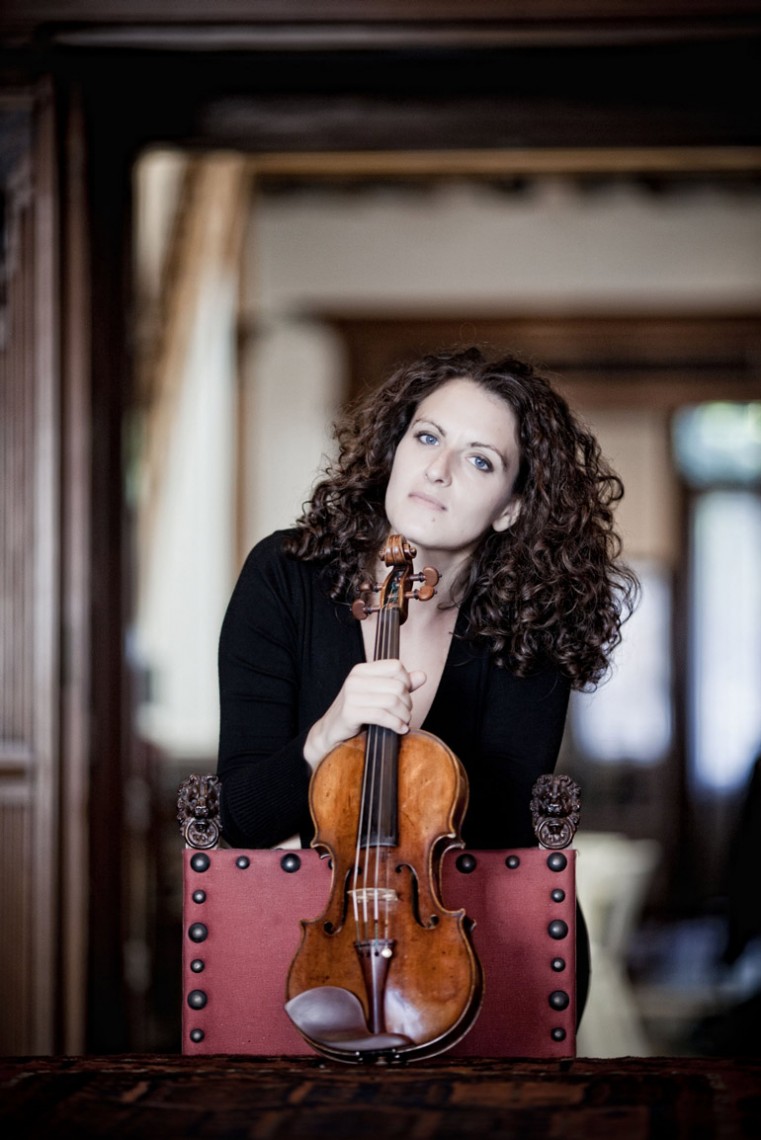
Dallas Symphony Orchestra/Jaap van Zweden. Meyerson Symphony Center. Dallas, Texas, May 16, 2015
The Dallas Symphony (DSO) has come up with an exciting extension of its spring season –an annual three-week long festival called SOLUNA. In the words of the conductor’s daughter Anna Sophia van Zweden, the Director of Festival Advancement – there’s a title for you! –
SOLUNA is “about collaborations between visual artists and the Dallas Symphony to create unique cross-pollinations of inspiration and ideas to inspire truly original multi-disciplinary art forms.”
Each SOLUNA International Festival will have a theme; this years is Destination: America, featuring multi-disciplinary works by artists who emigrated to the United States and stayed to enrich its culture. The SOLUNA music programming showcases members of the Dallas Symphony in various chamber music events as well as in full orchestral concerts.

This evening we heard works by Leonard Bernstein under its music director, Jaap van Zweden. Leonard Bernstein, born in Lawrence, Massachusetts, to Ukranian immigrant parents, was not himself one of those gifted foreigners who migrated to America. I was left scratching my head as to why Bernstein was included in Destination: America. For that matter, although other arts exhibitions (e.g., screening of Yael Bartana’s film, Inferno) were happening in conjunction with this evening’s concert, there wasn’t any multi-media involved in the concert itself, unless you count the surtitles for the text of the Kaddish Symphony.
Next week, the DSO gives another big concert during the SOLUNA International Music & Arts Festival, this one devoted to a single work, Mahler’s Symphony No. 3. What does Mahler have to do with Destination: America? He did come to America for performances with the Metropolitan Opera and the New York Philharmonic between 1909 and 1911, but he didn’t emigrate to the United States. Among the luminaries who did were Stravinsky, Schoenberg, Korngold, and Bartók. Why not feature these composers in major DSO concerts? Clearly, the SOLUNA concept needs some work. Perhaps all will become clear in season two.
However unclear some of its artistic goals may be, surely one of the most compelling reasons for creating a new festival in Dallas was to attract more attention to the city’s cultural activities and particularly to its wonderful orchestra; that said, the marketing of SOLUNA seems to have been sloppy, to say the least. When I arrived at my hotel in Dallas, I found a copy of WHERE magazine (Dallas/Fort Worth edition) in my room. This magazine is famous all over the U.S. for its listings of each city’s cultural events. Visitors have come to know that if they are in a strange city and wondering what to do on a given night, WHERE Magazine is the place to find out. So I browsed through the May/June 2015 issue of the magazine and soon realized that not only was there no feature on SOLUNA –surely a given for a major 3-week international festival in its inaugural season – but there was no mention of the festival at all!
Then, the morning after the Bernstein concert, I picked up the massive Sunday edition of the Dallas Morning News. The Arts and Life section of the paper includes a half-page calendar devoted to cultural events happening day by day from May 17 through May 30. During this period, there are no fewer than 13 events presented by or in association with the SOLUNA Festival; only three of these were included in the Dallas Morning News calendar, and among those left out were the three DSO performances of Mahler’s Third Symphony, arguably some of the “must-see” events of the entire festival.
I don’t mean to be pedantic, but if I were giving a course on Festivals 101 there are three main points I would emphasize to at least lay the groundwork for a successful festival: 1) Message: make sure the public can understand what the festival is all about – its purpose; why the city needs it, and why it’s a festival I must not miss! 2) Getting the Message Out: There is no point going to a lot of trouble putting a festival together if nobody knows about it. Make sure everyone in the entire city knows there is a festival going on and that they need to be there. 3) It Better Be Good: Professional marketing folks can sell anything, but ultimately your festival is doomed if the performances are duds. Fortunately, on this last point SOLUNA has a lot going for it. The Dallas Symphony is playing better than ever these days and music director Jaap van Zweden is at the height of his powers. Orchestras and audiences all over the world know this and Dallas would too if DSO management and marketing would step up their game.
Setting aside the muddled reasons why SOLUNA and the DSO mounted an all-Bernstein concert, the results were extraordinary. Apart from George Gershwin, Bernstein is far and away the most popular American “classical” composer of the Twentieth Century. His Candide Overture and West Side Story: Symphonic Dances are played almost every season by all the major orchestras. The impression remains, however, that Bernstein’s most successful music was really Broadway rather than concert hall fare, and it is true that his three symphonies are far less well-known than West Side Story.
That said, Bernstein’s Serenade, written at the urging of and premiered by violinist Isaac Stern, quickly established itself as one of the most important violin concertos of its time. Many celebrated soloists have embraced it, among them Francescatti, Perlman, Kremer, Hahn and Mutter. A fine young Dutch violinist named Jaap van Zweden also recorded the piece.

The soloist on this night, Dutch violinist Liza Ferschtman, not yet a big name, played the piece superbly. A former student of Ida Kavafian at Curtis, she is in demand all over the world. From the opening unaccompanied bars, it was clear that she plays with great beauty of tone and the technical demands of the piece were met with authority and virtuosity. Under Jaap van Zweden’s intense direction, the orchestra played with amazing precision. Bernstein loads in a lot of percussion to partner the string orchestra, and van Zweden balanced his forces with unusual care. In fact, this listener was often struck by the subtlety of Bernstein’s scoring for percussion, such was the clarity of van Zweden’s realization.
Both the Serenade and Kaddish Symphony have a philosophical dimension: Plato’s Symposium in the case of the Serenade and the Jewish prayer for the dead in the case of the Kaddish Symphony. The latter is a much larger work, requiring a huge orchestra with chorus and children’s choir. It is also challenging in its message. The narration, written by the composer, is essentially rumination on man’s relationship to God. When the work was premiered in 1963 and some listeners were taken aback by the colloquial and cheeky nature of the text, Bernstein pointed out that even in the Bible, figures such as Moses and Job expressed anger with God and the injustice of His actions. More than that, Bernstein’s Kaddish text expresses a severe crisis of faith. The Narrator all but ridicules God as a human creation invented to deal with man’s fear of death and his wish for immortality:
We are one, after all,You and I:
Together we suffer, together exist,
And forever will re-create each other,
Re-create, re-create each other!
Suffer, and re-create each other!
Bernstein’s Narrator essentially defines traditional belief in God as a cop-out, a failure to face the harsh realities of life – and death.
Tough stuff for orthodox Christians and Jews, but then this was 1963, hard on the heels of the Cuban missile crisis and the beginnings of the Vietnam War. And there was worse to come. No sooner had Bernstein completed his Kaddish Symphony, than President Kennedy was assassinated. Bernstein was devastated and led a coruscating performance of Mahler’s Resurrection Symphony in his memory. The Kaddish Symphony is also dedicated “to the beloved memory of John F. Kennedy.”
It is well-known that Jaap van Zweden holds Leonard Bernstein in the highest regard. As concertmaster of the Royal Concertgebouw Orchestra of Amsterdam, he played in many performances conducted by Bernstein and it was Bernstein who recognized van Zweden’s talent for conducting and urged him to begin a new (conducting) career.
Perhaps surprisingly, the two performances of the Kaddish Symphony this week were the first ever given in Dallas. It took 52 years, but Jaap van Zweden made it happen. The performance I heard was as fine as one could imagine. The Dallas Symphony Chorus under Joshua Habermann was astonishingly well prepared – they sang the long and difficult first movement from memory – and sang with passion and conviction. The Children’s Chorus of Greater Dallas directed by Cynthia Nott added a Mahlerian children’s view of heaven that was magical.
Soprano Kelley Nassief sang with both intensity and accuracy, and Narrator Ronald Guttman, a veteran actor familiar from popular TV series such as The Good Wife, Mad Men and Madame Secretary, found just the right tone for his reading of this challenging text. He was mostly low-key and thoughtful and carefully timed his outbursts. While I was sitting up close to the stage and heard every word, I did wonder whether his voice carried to the back of the hall. Perhaps a microphone would have been appropriate. In fact, the Narrators in the first performances – Hannah Rovina in Tel Aviv and the composer’s wife Felicia Montealegre in Boston – were miked and in Bernstein’s own recordings of the work, the Narrator is given considerable prominence.
Above all, we had Jaap van Zweden meticulously organizing the music and inspiring his huge forces to give of their best.
Bernstein’s Kaddish Symphony is far from being the composer’s most accessible score; not many listeners will leave the hall humming its melodies, but musically its invention repays repeated hearings, and philosophically it stimulates days or even weeks of reflection. No small achievement.
#LUDWIGVAN
Want more updates on Toronto-centric classical music news and review before anyone else finds out? Get our exclusive newsletter here and follow us on Facebook for all the latest.
- SCRUTINY | TSO Lets Berlioz Do The Talking In Season Opener - September 21, 2018
- RECORD KEEPING | Even Yannick Nézet-Séguin Can’t Make Us Love Mozart’s La Clemenza di Tito - September 6, 2018
- RECORD KEEPING | Giovanna d’Arco With Anna Netrebko Explains Why The Best Operas Survive - August 30, 2018



